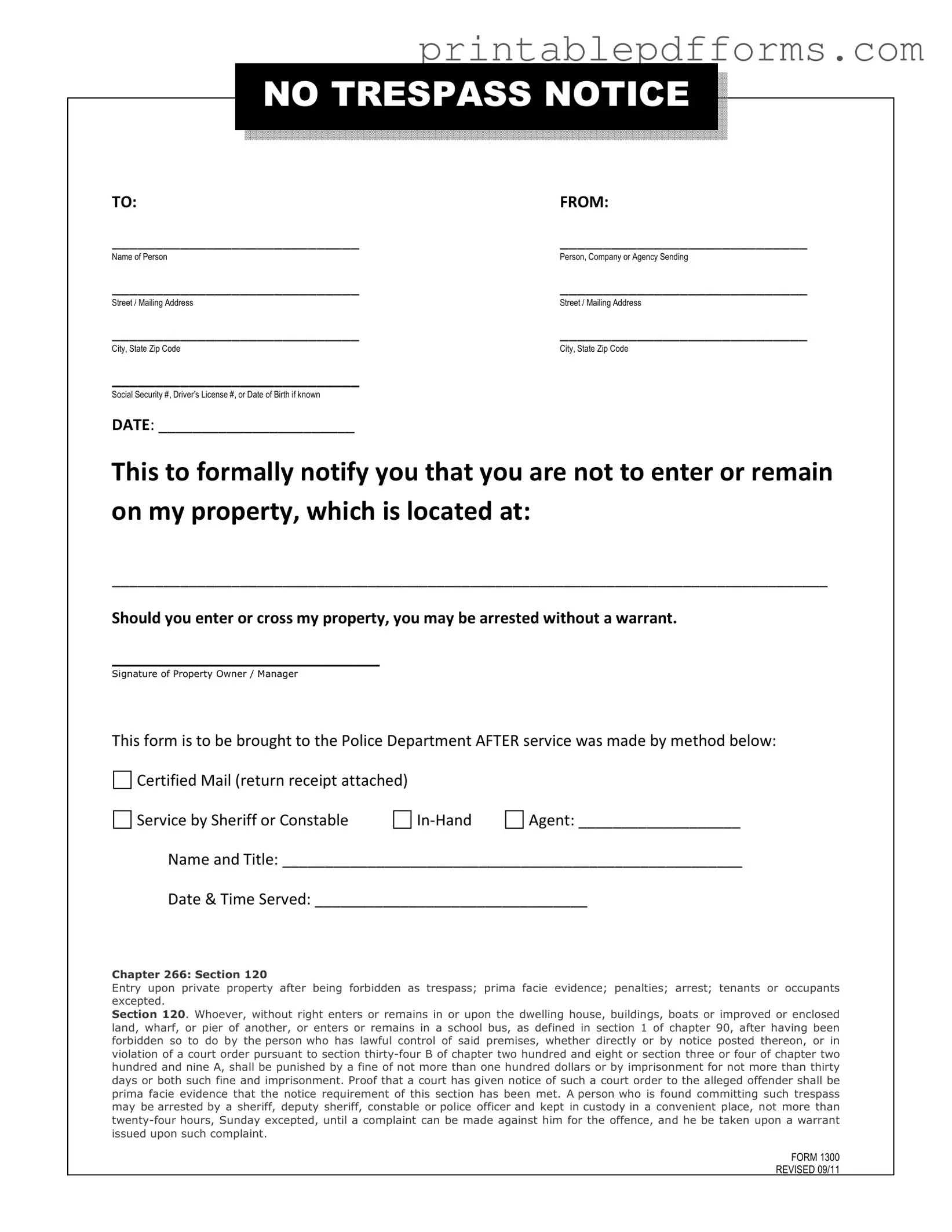What is a No Trespassing Letter?
A No Trespassing Letter is a formal document that notifies individuals that they are not permitted to enter or remain on a specified property. It serves as a clear warning and can be used to support legal action if someone disregards the request.
Why would someone use a No Trespassing Letter?
Individuals may choose to issue a No Trespassing Letter for various reasons, including:
-
To protect their privacy and property rights.
-
To deter unwanted visitors or trespassers.
-
To establish a legal basis for future actions if the trespass occurs.
How do I fill out a No Trespassing Letter?
To complete a No Trespassing Letter, follow these steps:
-
Fill in your name and address as the property owner.
-
Include the name and address of the individual being notified.
-
Clearly state the property address where trespassing is prohibited.
-
Specify the date of the letter.
-
Sign the letter to validate it.
What happens if someone ignores the No Trespassing Letter?
If an individual ignores the No Trespassing Letter and enters the property, the property owner has the right to contact law enforcement. The letter serves as a basis for potential legal action, including arrest without a warrant for trespassing.
How should I deliver a No Trespassing Letter?
Delivery of the letter is crucial for it to be effective. Recommended methods include:
-
Certified Mail with a return receipt requested.
-
Personal service by a sheriff or constable.
-
In-hand delivery to the individual, ensuring you document the date and time served.
Is a No Trespassing Letter legally binding?
While a No Trespassing Letter is not a legal document in itself, it establishes a clear intent from the property owner. It can strengthen the case if legal action is pursued, as it demonstrates that the owner has made their wishes known.
Can a No Trespassing Letter be revoked?
Yes, a property owner can revoke a No Trespassing Letter at any time. To do so, it is advisable to provide a written notice to the individual, stating that the previous letter is no longer in effect.
What if I need to trespass on my own property?
In the event that you need to access your property, you can do so freely. However, if you have issued a No Trespassing Letter, it is wise to communicate any changes to the individual previously notified to avoid misunderstandings.
Can a No Trespassing Letter be used in court?
Yes, a No Trespassing Letter can be used in court as evidence of the property owner's intent to prohibit entry. It can support claims of trespassing and help establish a pattern of behavior if legal action is necessary.

